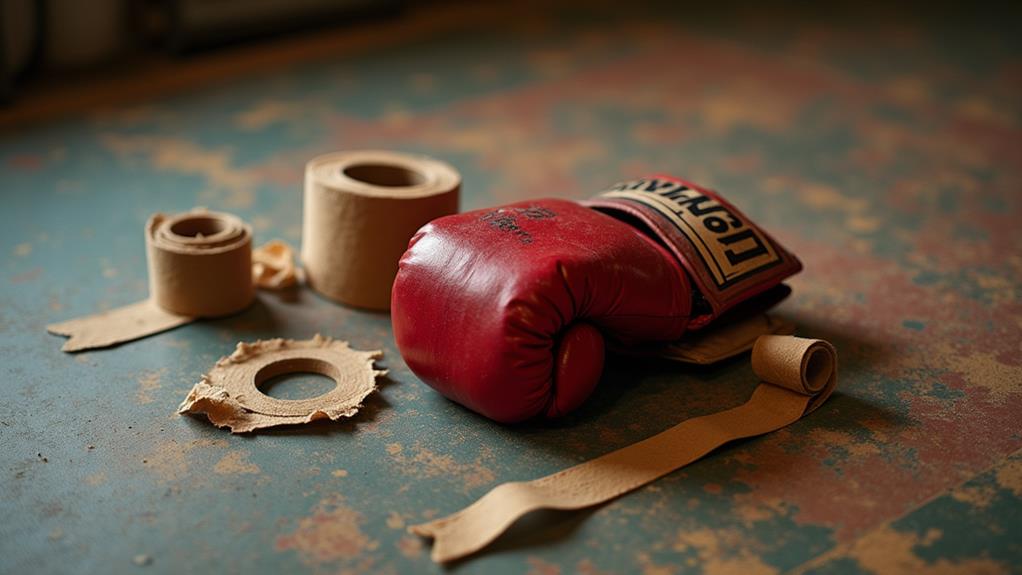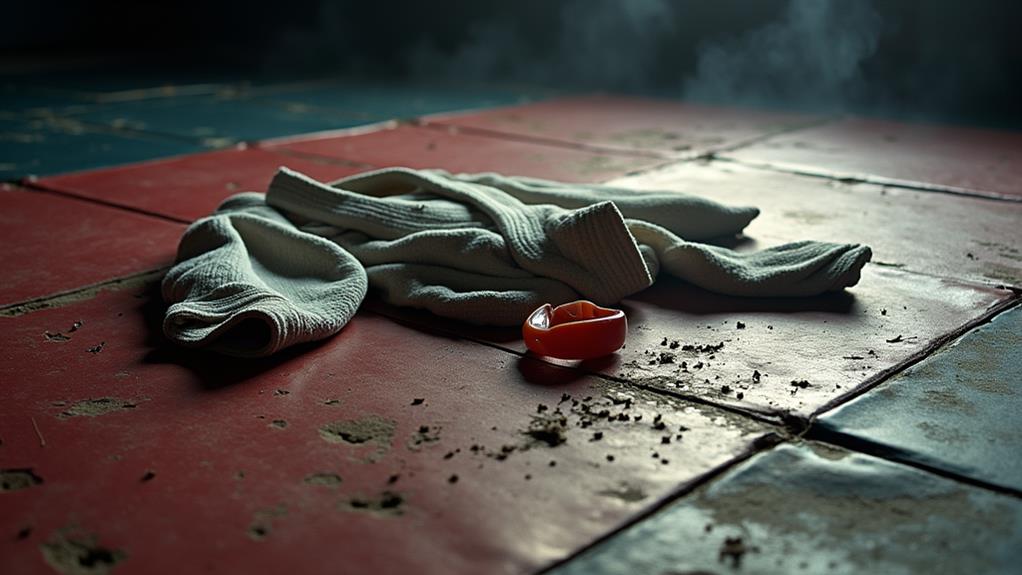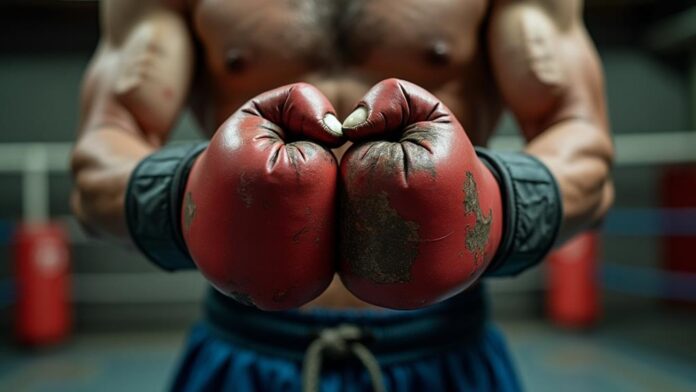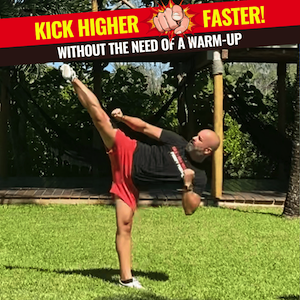As you hit 40, your body undergoes significant changes that increase your risk of injury in combat sports. Your physical conditioning declines, making you more vulnerable to injuries, and your risk of traumatic brain injury and chronic traumatic encephalopathy (CTE) escalates. Your training approach needs to shift from peak performance to sustainable participation, focusing on technique refinement and skill development over intensity. By adapting your training, you can reduce your injury risk and extend your participation in martial arts. To stay safe and competitive, you'll need to make proactive changes – and that's just the beginning.
Age-Related Injury Risks in Martial Arts
As you enter your 40s, the physical demands of martial arts become exponentially more hazardous, with the risk of severe injuries and long-term health consequences skyrocketing. Your body undergoes significant changes that affect your performance in combat sports, making you more susceptible to injuries.
You're now classified as a high-risk athlete, and it's vital to understand the age-related risks you face. Your risk of traumatic brain injury increases, and concussive injuries can have devastating effects, including subdural hematomas.
Repetitive head trauma can also lead to chronic traumatic encephalopathy (CTE), a condition that may manifest years after the initial injuries. As an older fighter, you're more likely to experience neurological health concerns, which can impact your quality of life.
Regulatory measures require thorough health evaluations to guarantee your safety and fitness for competition. It's important to acknowledge these risks and take proactive steps to mitigate them.
You must prioritize your health and safety, recognizing that your body is no longer as resilient as it once was. By understanding the age-related injury risks, you can make informed decisions about your continued participation in martial arts.
Balancing Intensity With Injury Risk
Beyond the age of 40, your goal in martial arts shifts from peak performance to sustainable participation, requiring a delicate balance between intensity and injury risk. As you age, your physical conditioning declines, making you more vulnerable to injuries in combat sports. You face a higher risk of traumatic brain injuries, which can have severe consequences, including chronic neurological issues like CTE.
The cumulative effects of repetitive head impacts contribute to this risk, making it essential to reassess your training and competition strategy.
To balance intensity with safety, consider adopting defensive fighting styles, which can reduce your injury risk. This approach allows you to maintain competitive participation while minimizing the dangers associated with high-intensity combat sports.
Licensing considerations for older fighters also emphasize individualized assessments, taking into account age-related risks and thorough evaluations of physical and neurological health.
By acknowledging these risks and adjusting your approach, you can enjoy a longer, healthier career in martial arts, minimizing the likelihood of injury and maintaining your overall well-being.
Helping Martial Artists Aged Over 40

Martial artists over 40 require specialized support to maintain their health and safety in combat sports. As you age, you face increased risks of neurological health concerns, including chronic traumatic encephalopathy (CTE), due to cumulative head impacts and declining brain resilience. Your physical fitness and skills also start to decline, making you more susceptible to injuries.
To mitigate these risks, you need thorough health evaluations, including neurological assessments (MRI and MRA) to detect underlying issues before participation. Licensing decisions should involve individualized assessments, evaluating your current skill level and extensive cardiovascular fitness tests (EKG, ECHO) to guarantee your safety.
You must also be aware of the long-term effects of concussions, as symptoms may not manifest for years, emphasizing the significance of ongoing health management and monitoring.
It's vital to prioritize your health and take proactive steps to manage age-related risks. This includes working on your defensive capabilities and maintaining a high level of physical fitness. By taking these steps, you can minimize your risk of injuries and continue to participate in combat sports safely.
Ongoing health management is essential to secure your long-term health and well-being in the world of combat sports.
Managing Training Sessions for Safety
Roughly four out of five injuries in combat sports occur during training, making it a vital area of focus for athletes over 40. As you train, you're more likely to get hurt than when you compete. This is especially true in MMA, where common injury areas include the head, neck, lower body, and upper body.
To minimize your risk, you need to manage your training sessions effectively. You can start by limiting your training hours. Research shows that training more than 12 hours a week increases your injury risk. In fact, athletes who train 6-8 hours a week experience fewer injuries than those who train longer.
You should also make sure health professionals are present during your training sessions. They can assess and manage injuries immediately, ensuring your safety. By taking these precautions, you can reduce your risk of injury and stay healthy.
Effective management of training sessions is essential for athletes over 40, and with the right approach, you can continue to train safely and successfully in combat sports. By prioritizing your safety, you can enjoy a longer and healthier career in MMA or other combat sports.
The Role of Protective Equipment

As you manage your training sessions for safety, don't overlook the importance of protective equipment in reducing your injury risk. In combat sports, especially for fighters over 40, protective gear plays a vital role in preventing severe injuries. MMA fighters, for instance, use mouth guards and groin protectors to markedly lower injury rates in those areas.
| Protective Equipment | Usage Rate | Injury Reduction |
|---|---|---|
| Mouth Guards | 100% | Significant reduction in mouth and dental injuries |
| Groin Protectors | 87.1% | Significant reduction in groin injuries |
| Headgear | Not specified | Reduction in head injuries during training |
| Advanced Protective Gear | Regular updates | Enhanced safety standards and reduced injury risks |
As an older combatant, you're more prone to severe injuries due to diminished physical resilience. Regular updates in protective gear technology can help mitigate this risk. By utilizing improved protective equipment, you can reduce your risk of common injuries, such as facial lacerations, which account for 47.9% of MMA injuries. By prioritizing protective equipment, you can maintain your safety and extend your career in combat sports.
Identifying High-Risk Injuries in Combat Sports
Over time, your risk of suffering severe injuries in combat sports increases considerably, particularly if you're competing after 40. As you age, your body undergoes natural declines in physical fitness and reaction times, making you more susceptible to injuries, especially traumatic brain injuries (TBIs).
Older fighters face higher mortality rates from conditions like subdural hematomas, with a staggering 50% mortality rate for those over 70.
You're also more likely to experience severe outcomes from head injuries, including concussions and neurological issues. Chronic neurological conditions like chronic traumatic encephalopathy (CTE) are more prevalent among older combat sports athletes due to the cumulative effects of repeated head trauma over time.
Furthermore, high-risk injuries in older combatants aren't limited to TBIs; cardiovascular complications are also a significant concern.
To guarantee fighter safety, it's essential to undergo thorough health assessments prior to bouts. By identifying these high-risk injuries, you can take proactive steps to mitigate their impact and extend your career in combat sports.
Understanding the risks is key to making informed decisions about your health and safety in the ring.
Strategies for Injury Prevention and Recovery

Your safety in the ring depends on more than just your fighting skills – it also relies on your ability to prevent and recover from injuries. As an older athlete, you need to prioritize injury prevention and take proactive steps to protect yourself from harm. This includes investing in advanced protective gear, such as headgear and mouthguards, which have been shown to reduce the incidence of concussions and facial injuries.
Regular cardiovascular fitness evaluations, including EKG and echocardiograms, are also essential to identify potential health issues that could lead to injuries.
Additionally, continuous monitoring of your neurological health through assessments like MRI and cognitive function tests can aid in early detection of issues that may predispose you to injuries.
Tailored training regimens that prioritize technique over intensity can also help mitigate injury risks.
Adapting Training Methods for Older Athletes
Beyond the age of 40, physical decline is inevitable, with strength, flexibility, and reaction time slowly diminishing. As you continue to participate in combat sports, you'll need to make adaptations to your training methods to mitigate injury risks. This means incorporating low-impact exercises and emphasizing proper warm-up and cool-down routines to prepare your body for the demands of combat sports.
Your training sessions should prioritize skill development and technique refinement over intensity, reducing the likelihood of injuries while still allowing for effective practice. It's vital to implement individualized training regimens that consider your age, experience, and physical condition. This approach enhances safety and performance by tailoring training to your unique needs.
Regular assessments of cardiovascular health and neurological fitness are important to guarantee your training methods align with your current physical capabilities. By making these adjustments, you'll be able to continue participating in combat sports while minimizing the risk of injury.
As an older athlete, it's important to be proactive in adapting your training methods to your changing physical needs, allowing you to stay safe and competitive in your sport.



